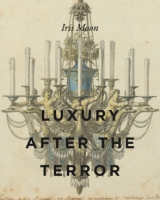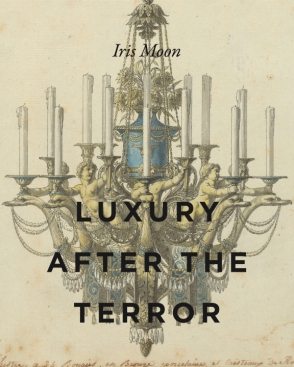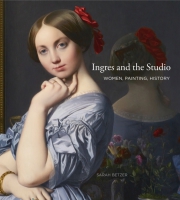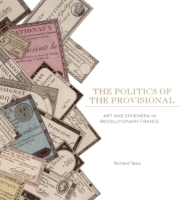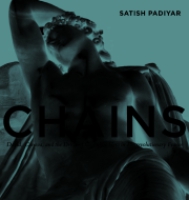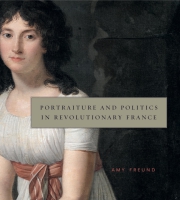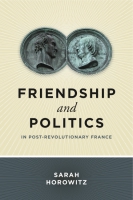Luxury After the Terror
Iris Moon
“In Luxury After the Terror, Moon demonstrates the fascinating and subtle ways in which the decorative arts were shaped by the contradictory politics of the French Revolution. She measures this influence less in terms of iconography and the new emblems such as Phrygian bonnets and tricolour cockades that came to adorn many surfaces; rather, she reflects on the expressive limits and materiality of different genres of cultural production, from wallpaper and assignat banknotes (including a remarkable prototype stitched on silk), to lime-wood carving and hard-paste porcelain. Her analysis balances a meticulous attention to the physical properties and aesthetics of objects from across the 1790s with a refreshing willingness to speculate about how they articulated collective fantasies and anxieties.”
- Media
- Description
- Reviews
- Bio
- Table of Contents
- Sample Chapters
- Subjects
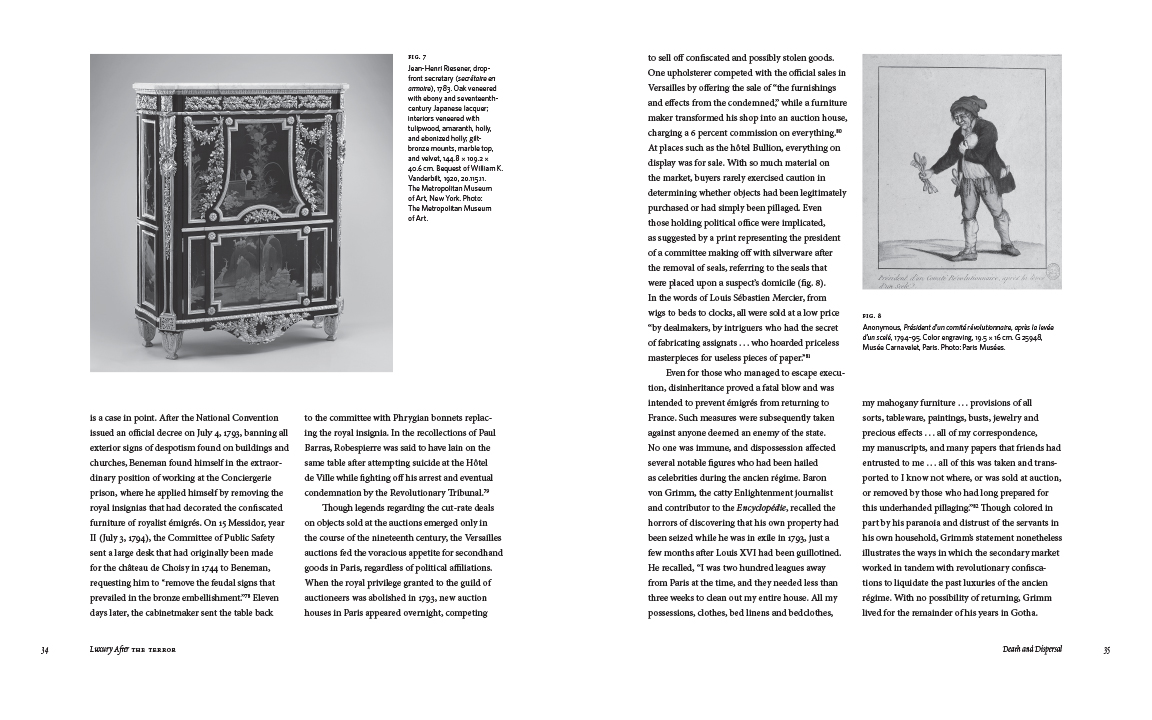
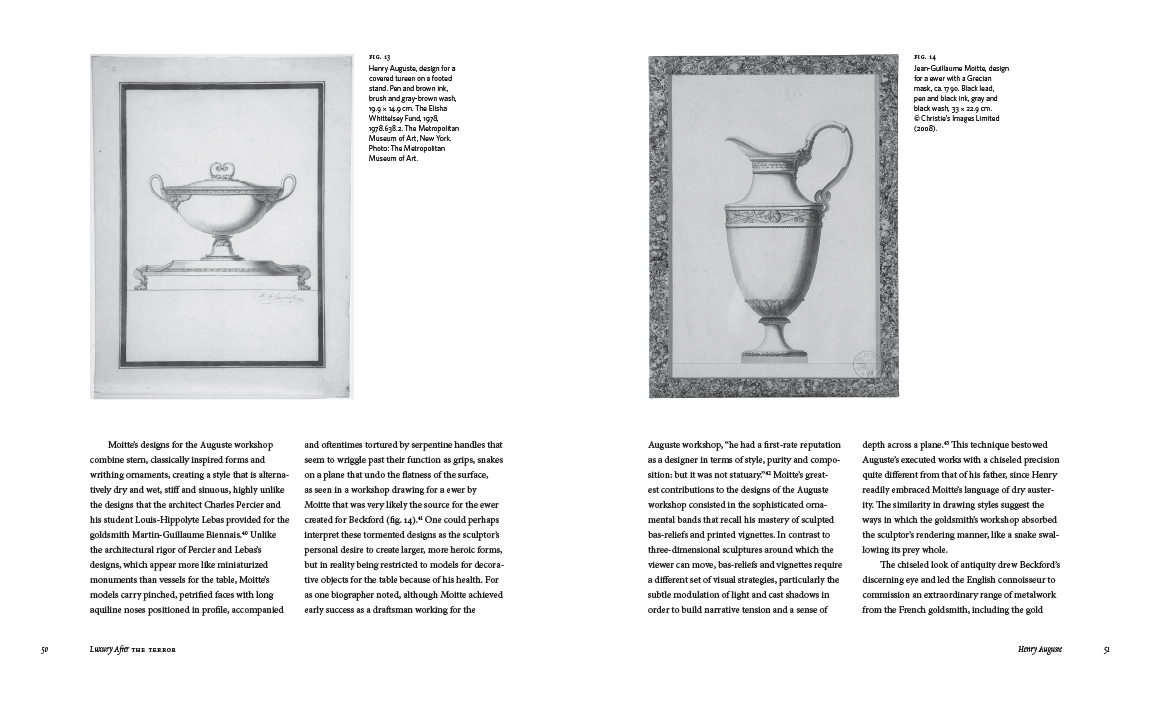
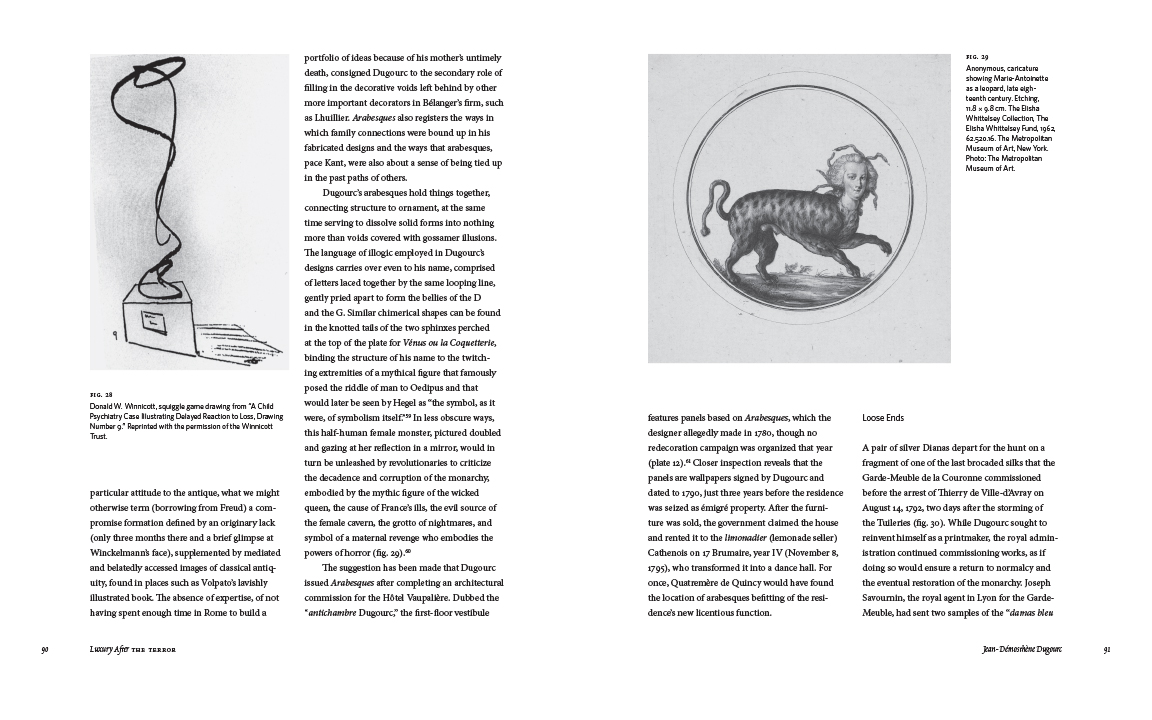
Spanning the final years of the ancien régime from the 1790s to the first two decades of the nineteenth century, this richly illustrated book positions luxury within the turbulent politics of dispersal, disinheritance, and dispossession. Exploring exceptional works created from silver, silk, wood, and porcelain as well as unrealized architectural projects, Iris Moon presents new perspectives on the changing meanings of luxury in the revolutionary and Napoleonic periods, a time when artists were forced into hiding, exile, or emigration. Moon draws on her expertise as a curator to revise conventional accounts of the so-called Louis XVI style, arguing that it was only after the revolutionary auctions liquidated the king’s collections that their provenance accrued deeper cultural meanings as objects with both a royal imprimatur and a threatening reactionary potential.
Lively and accessible, this thought-provoking study will be of interest to curators, art historians, scholars, and students of the decorative arts as well as specialists in the French Revolution.
“In Luxury After the Terror, Moon demonstrates the fascinating and subtle ways in which the decorative arts were shaped by the contradictory politics of the French Revolution. She measures this influence less in terms of iconography and the new emblems such as Phrygian bonnets and tricolour cockades that came to adorn many surfaces; rather, she reflects on the expressive limits and materiality of different genres of cultural production, from wallpaper and assignat banknotes (including a remarkable prototype stitched on silk), to lime-wood carving and hard-paste porcelain. Her analysis balances a meticulous attention to the physical properties and aesthetics of objects from across the 1790s with a refreshing willingness to speculate about how they articulated collective fantasies and anxieties.”
“The robust history of artisans provides new vantage points from which to understand the French Revolution. Moon encourages her readers to adopt a critical lens on ‘survival’: not only of artisans in a changing economy, but also of physical objects in a new world of collecting and museums.”
“Esthetically pleasing, meticulously researched, and engagingly written, the range of topics Moon explores is impressive and sometimes daunting. . . . Challenging traditional scholarship, Moon introduces new perspectives on this fascinating period of French and European history.”
“Luxury After the Terror brings a criticality, a poetics, and a politics to this material that is truly exciting to see. Offering a vital new reading of the place of the decorative arts in the wake of revolution and reorienting our understanding of the period toward a range of captivating and unfamiliar objects, this meticulously researched and brilliantly argued book is an exhilarating rethinking of the field.”
Iris Moon is Assistant Curator in the European Sculpture and Decorative Arts Department at the Metropolitan Museum of Art and the author of The Architecture of Percier and Fontaine and the Struggle for Sovereignty in Revolutionary France. She teaches at The Cooper Union for the Advancement of Science and Art.
List of Illustrations
Acknowledgements
Introduction
1. Death and Dispersal: The 1793-94 Revolutionary Auctions at Versailles
2. Henry Auguste: Precious Metals in the Age of Terror
3. Jean-Démosthène Dugourc: Political Fantasies of the Arabasque
4. Aubert-Henri-Joseph Parent: Carving in Exile
5. Alexandre Brongniart: Fragile Terrains
Coda
Notes
Bibliography
Index
Download a PDF sample chapter here: Introduction
Also of Interest
Mailing List
Subscribe to our mailing list and be notified about new titles, journals and catalogs.
